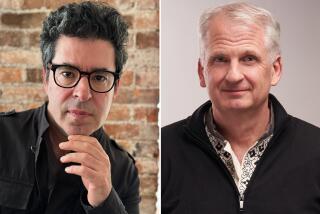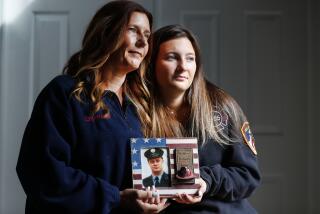In Hannibal Country
AMAGANSETT, N.Y. — Shortly after 9/11, cultural analysts asserted that the terrorist attacks had created a new paradigm, a whole new prism through which we view our experience and imagine our future. By definition, paradigms, like Copernicus’ revision of the universe or Einstein’s theory of relativity, constitute a dramatic break from the way we think and live. By that standard, 9/11 seemed to qualify, though in only the narrowest sense. America was waging a new kind of war, it was forming unexpected friendships, and flying would never be the same again. Otherwise, American daily life seemed hardly affected by 9/11.
But the recent sniper attacks in Maryland, Washington, D.C., and Virginia, as well as a series of other seemingly unrelated incidents, suggest that 9/11 has, over the last year, emerged as a paradigm after all.
In ways both subtle and profound, and without most of us really being fully aware of it, 9/11 seems to have invaded our consciousness, caused us to emphasize and then reinterpret certain events, altered our perspectives, heightened our anxieties and shaken our faith. It has fundamentally changed the way we view the world, so that episodes like the sniper killings seem less aberrations in a benign universe than the cold reality of a malign one. It has encouraged us, moreover, to look for those things that underscore our vulnerability, essentially recreating the world in the image of 9/11. In a way, 9/11 has turned America into Hannibal Country -- a nation fraught with a sense of evil, danger and death.
This is not to say that what 9/11 has wrought is novel. History often flings out paradigms that first signify and then shape the national consciousness. The Great Depression created a sense of anxiety and guilt that ran through the culture. The bombing of Hiroshima introduced a nuclear age that infused the nation with fear of a holocaust. The assassination of President Kennedy convinced America that it had lost its innocence, and the war in Vietnam seemed to demonstrate that the country had lost its moral compass and thus its moral authority.
Each of these historical events did more than trigger a national mood. They rapidly assumed symbolic status that helped redefine the country. They became metaphors -- the Depression for the punishment that America had to visit upon itself for the excesses of the 1920s; the bomb for the hubris of man playing God; the Kennedy assassination for the violence that lurked within the country and betrayed its happy, placid exterior; Vietnam for the arrogance of American power.
In turn, each metaphor was subsumed psychologically and culturally, thrumming as the text or subtext in American movies, songs, novels and poems. (Just think of how Vietnam, for example, surfaced in movies as dissimilar as “Chinatown” and “McCabe and Mrs. Miller.”) America became successively the Depression Nation, the Nuclear Nation, the Nation of Lost Dreams and the Nation of Misguided Ambitions. But these were not only themes that arose from the events themselves; they became frames into which much of American life was fitted. As a result of imposing the metaphor on the society, these visions of the country became self-fulfilling prophecies.
In much the same way, 9/11 appears to be an event that has become a metaphor, though it has done so much more stealthily. 9/11 incorporated several basic themes. The essential element of the attacks that day was surprise. You could be sitting at your desk one second and be immolated the next. Nothing in our experience, not even Pearl Harbor, had prepared us for this. The second element was the capriciousness of fate that the attacks illustrated. There was no explanation for why some survived and others didn’t, much less an explanation of why anyone at all had to die that day. And the third element was the inexplicability of the evil that caused it. The victims were not soldiers at war; they were ordinary citizens doing their daily business. None of them had done anything to deserve their deaths. The deed could only be attributed to a force so heinous that it was beyond our comprehension.
But 9/11 didn’t create fear or anxiety out of whole cloth. As Barry Glassner has analyzed it in his book “The Culture of Fear,” Americans have long been subjected to fear-mongering both by the media and by various corporations, because fear can sell products. And Americans certainly had experienced the whims of fate in the reports of every airplane crash or killer hurricane or outbreak of deadly disease. We were also aware of the continuing possibility of evil long before 9/11, because we had witnessed it in a line of psychopaths from Adolf Hitler to Jeffrey Dahmer. In fact, suspicion and doubt had become embedded in the American mind.
Until 9/11, however, these feelings had not displaced America’s basic optimism. It took 9/11 to reify the inchoate fears and slowly force us to perceive the world as a different place. Since 9/11 there is a new sense of vulnerability, a feeling of senselessness, a recognition of the palpability and ubiquity of evil.
One of the reasons this wasn’t readily apparent immediately after 9/11 is that it has manifested itself less in large effusions than in small signs. Take the news. Before 9/11, the big news story was Rep. Gary A. Condit’s possible involvement in the death of a young former intern. Some observers quickly predicted that the Condit saga wouldn’t last in the face of a new post-9/11 sobriety. It didn’t last, but that may have had less to do with sobriety than with the fact that it didn’t fit the new paradigm of 9/11. Stories like the anthrax scare or the apprehension of alleged terrorists in Buffalo, N.Y., and Portland, Ore. -- which buttressed the psychological triad of vulnerability, arbitrariness and evil -- were now favored over stories of personal and political scandal.
Similarly, earlier this year there was a spate of stories about young children, usually girls, being kidnapped and killed. Though law enforcement officials later said that the number of kidnappings hadn’t really increased, the media seized on these incidents as if kidnapping and murder were epidemic. They did so because the public was fascinated by these reports, but one can argue that the public was fascinated not because it had some morbid curiosity but because nothing seemed to reinforce vulnerability, senselessness and evil as did the murders of innocent children. These horrifying stories played out the 9/11 paradigm. Nor may it be a coincidence that two recent popular novels, Donna Tartt’s long-awaited “The Little Friend” and Alice Sebold’s “The Lovely Bones,” both concern murdered children. It is an idea that clearly taps into the national fragility.
This may have been even truer of the snipers. During the siege, profilers remarked how these killers were different from previous ones. They struck randomly. They struck at street corners, gas stations, schoolyards and parking lots -- places where one was presumed safe. They struck impersonally and at a distance. They disrupted the ordinariness of life so that people were terrified of leaving their homes, and though the feeling was totally irrational, polls indicated that the dread wasn’t limited to the Washington area. The terror was national. By one account, some 82% of Americans felt unsafe.
Naturally, any terror rampage of this sort would have attracted national attention, especially now that the cable news networks are there to fan stories all day and all night long. But the intensity of the spotlight on the snipers, and the fear they engendered, may have also been a function of just how well they fit the 9/11 paradigm. It was almost as if they were consciously acting out of a knowledge of how 9/11 had affected us -- of how it had given us all a case of the jitters. These were the rare serial killers who actively reinforced our vulnerability, the arbitrariness of death and the immanence of evil that had entered the American mind. The snipers were expressions of 9/11.
For that is the world in which we now find ourselves. It is a place where men plow planes into skyscrapers, where lunatics send anthrax spores through the mail, where maniacs snatch little girls off sidewalks or from their bedrooms, where snipers casually shoot people pumping gas or loading packages into their cars. It is, alas, a real world, though perhaps one that is not all that different from the world before 9/11, where atrocities also occurred. What makes it seem so different is that everything is of a piece now that we have reconceptualized the world to demonstrate the terror we have seen and felt. It is a world made in the image of our new paradigm, and it is frightening.
More to Read
The biggest entertainment stories
Get our big stories about Hollywood, film, television, music, arts, culture and more right in your inbox as soon as they publish.
You may occasionally receive promotional content from the Los Angeles Times.










